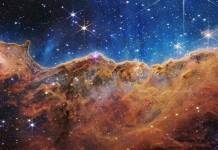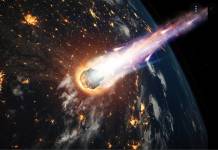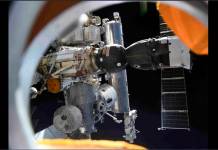
Juno will show humanity the real Jupiter for the first time
NASA’s Juno space probe has finally sent back its first-ever close-up images of Jupiter’s north pole, and they are unique in the Solar System. The spacecraft captured the shots on August 27 during its first flyby the planet.
Juno came as near as 2,500 miles (4,200 kilometers) above Jupiter’s clouds. The JunoCam stills show storm systems and weather activity that don’t resemble anything seen before in Saturn, the other gas giant of the Solar System.
The space probe was launched from Cape Canaveral Air Force Station in August 2011 as part of the New Frontiers program. In August and September 2012, trajectory corrections were made to Juno, and then received a speed boost during an Earth flyby in October 2013. It arrived at Jupiter and entered into its orbit in July 2016.
What did the JunoCam reveal?

It is a view people cannot get on Earth, and Scott Bolton, the primary investigator of Juno from the Southwest Research Institute in San Antonio, has pointed out the discoveries made by looking closely at the JunoCam images.
The planet’s north pole is bluer than other areas, and there’s no sign of usual latitudinal bands or zone and belts. Its clouds have shadows, possibly meaning they are at a higher altitude than other visible features.
The hexagon at Saturn’s north pole is missing on Jupiter. Bolton said the planet is unique as they thought the hexagon was a common trait among gas giants.
JIRAM and Waves are onboard the Juno Spacecraft
The JunoCam was not the only onboard science instrument doing some work. The Jovian Infrared Auroral Mapper (JIRAM), supplied by the Italian Space Agency, took images of Jupiter’s north and south polar regions in infrared wavelengths.
The infrared close-ups revealed never-seen-before warm and hot spots in the planet’s poles. Most importantly, Jupiter’s southern aurora was photographed for the first time, leaving Bolton and company at NASA completely amazed.
No other Earth or space instruments had been able to do so before. Now JIRAM will allow studying the aurora’s morphology and dynamics.
The Radio/Plasma Wave Experiment (Waves) also collected interesting data. It recorded transmissions coming from the planet. NASA scientists have known about these ghostly-sounding radio emissions since the 1950s, and they now have the chance to analyze them.
Juno will fly over the planet 35 more times over a span of 20 months. NASA expects JunoCam’s earliest failure in September 2017. When it happens, the space agency will dispose of the spacecraft with a controlled deorbit into Jupiter in February 2018.
Source: NASA











